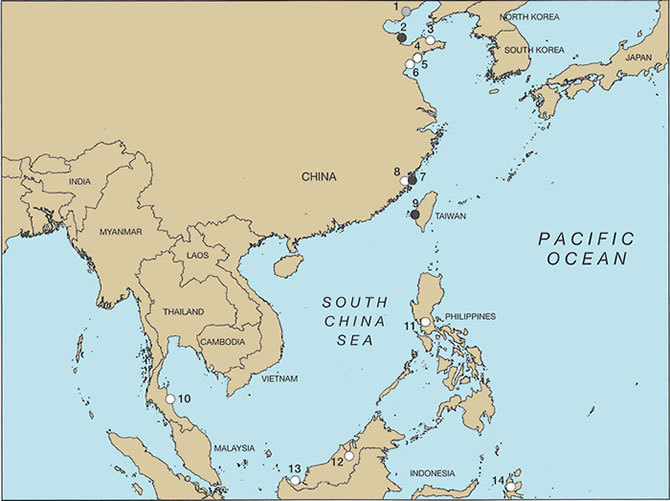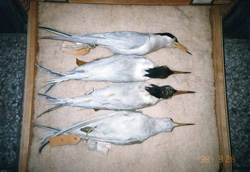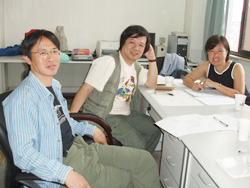
The distribution of Chinese Crested-tern Sterna bernsteini;
(1)Beidaihe; (2)Yellow River delta; (3)Yantai; (4)Cagkou; (5)Qingdao; (6)Muguan Dao; (7)Mazu Dao; (8)Fuzhou; (9)Pachang river; (10)Pak Phanang; (11)Manila Bay; (12)Baram; (13)Buntal (14)Kao
○ Historical(pre-1950) ● Fairly recnt(1950-1979) ● Recent(1980-present
The Chinese Crested Tern, a little-known but critically endangered bird, is found only in eastern Asia. It was discovered in eastern Indonesia in 1861 but there had been very few confirmed records of this species from the wintering grounds (in Indonesia, Malaysia, Philippines and Thailand).
In the late 19th century to early 20th century it was found breeding in coastal China. It was presumed extinct since 21 birds were collected from Shandong Province in 1937. There were no positive records of this species since.
In 2000, a survey at the newly established seabird nature reserve at Mazu Island (Fujian Province but under the administration of Taipei) revealed a small breeding colony of this species. After extensive surveys by ornithologists in China, another breeding site was found at Jiushan Islands of Xiangshan County, Zhejiang Province in 2004. However, because of human disturbance the colony abandoned the islands and moved to Zhoushan Islands of Zhejiang Province.
In December 2010, a wintering Chinese Crested Tern was found in eastern Indonesia.
Because of the rarity of this species, the Convention of Migratory Species appointed BirdLife International to compile an international action plan for its conservation. The action plan was launched at the meeting of the East Asian Australasian Flyway Partnership in Inchon, Korea in February 2010.







